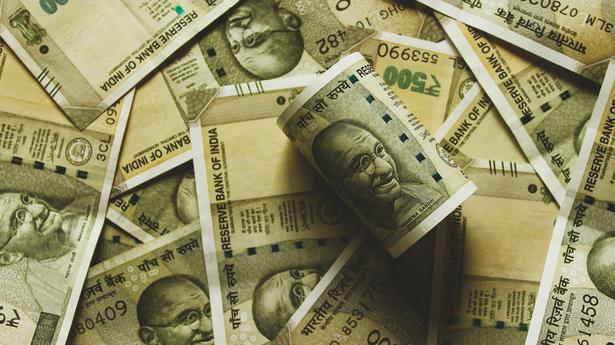
Data | How States’ share in Centre’s taxes declined due to cesses, explained in 5 charts
The Hindu
The share of the States in divisible pool is shrinking despite their carrying a higher burden of expenditure
Nearly two weeks ago, Chief Ministers expressed their concern about dwindling State revenues in a NITI Aayog meeting chaired by the Prime Minister. They sought a higher share in the divisible pool of taxes and an extension of GST compensation, both of which have long remained a bone of contention between the Union government and the States.
States’ financial health had taken a turn for the worse with the implementation of the Ujwal DISCOM Assurance Yojana, farm loan waivers, as also the slowdown in growth in 2019-20. But, heightened expenses during the pandemic and a revenue shortfall further strained their finances.
It is in this context that it becomes important to understand who raises the revenue and who carries the bulk of expenditure. The Constitution grants the Union government more revenue-raising powers while the States are tasked to undertake most of the development and welfare-related responsibilities. According to the 15th Finance Commission’s report, in FY19, the Union government raised 62.7% of the total resources raised by the Union government and States, while States had borne 62.4% of the aggregate expenditure. Chart 1 shows the Union government’s and States’ share in total resources raised and total expenditure borne in FY19.
Chart appears incomplete? Click to remove AMP mode
This allocation of taxation powers and expenditure responsibilities results in an imbalance, and hence the Constitution provides for sharing of the Union government’s revenue with the States. Successive Finance Commissions (FC) have attempted to reduce the imbalance by increasing the States’ share in Central taxes. Although the 14th and 15th FC raised the share of States in gross taxes to over 40%, the actual share never reached this mandated level. After reaching a peak of 36.6% in FY19, States’ share fell and has since stagnated at around 29%. At the same time, the gap between the share recommended by the FC and the actual devolution has widened to more than 11 percentage points, the highest in at least two decades. Chart 2 shows the States’ share in the divisible pool of taxes mandated by the FC and the actual share devolved to the States.
So, even though FC raised the States’ share in Central taxes, it didn’t translate into an increase in the actual share devolved as the divisible pool shrank. This can be explained by illustrating the revenue sharing during the pandemic. As the gross tax revenues took a hit during the pandemic, the States’ share of the Union government’s taxes recorded a steep fall of 15% and 9% in FY20 and FY21, respectively. But, the Union government’s share continued to rise. This is because the Centre beefed up its revenue by levying cesses and surcharges which are not shareable with the States. Chart 3 shows the States’ and Union government’s share of gross tax revenue.
In the past few years, the share of cesses and surcharges in gross tax revenue has risen significantly. From 10.4% in FY12, their share climbed up to 20% by FY21, suggesting the Union government’s excessive reliance on these instruments to raise revenue. While the surge in cess/surcharge revenue, largely through duties on fuel has swelled the Union government’s coffers, this has also shrunk the divisible pool of resources. Chart 4 shows the share of cesses and surcharges in gross tax revenue.

Adani Krishnapatnam Port handles 5.85 MMT of cargo in June, sets record for second consecutive month
Adani Krishnapatnam Port achieves record-breaking cargo volume, cements position as leading logistics hub on India's eastern coast.

 Run 3 Space | Play Space Running Game
Run 3 Space | Play Space Running Game Traffic Jam 3D | Online Racing Game
Traffic Jam 3D | Online Racing Game Duck Hunt | Play Old Classic Game
Duck Hunt | Play Old Classic Game










